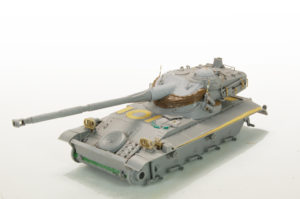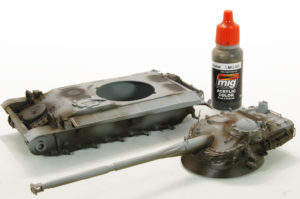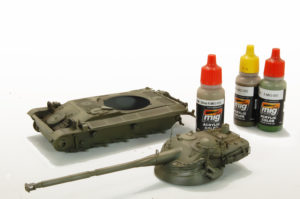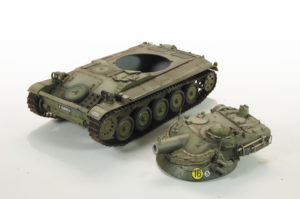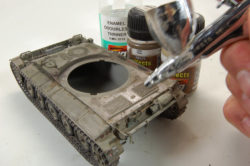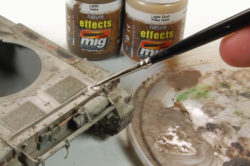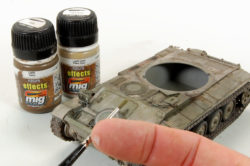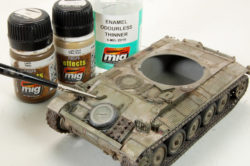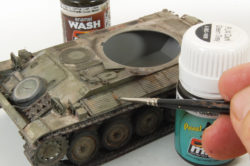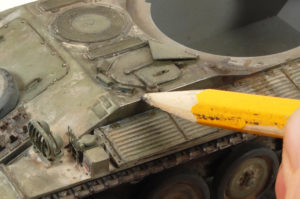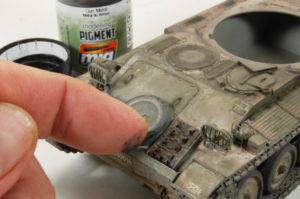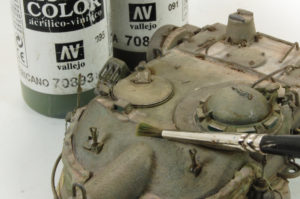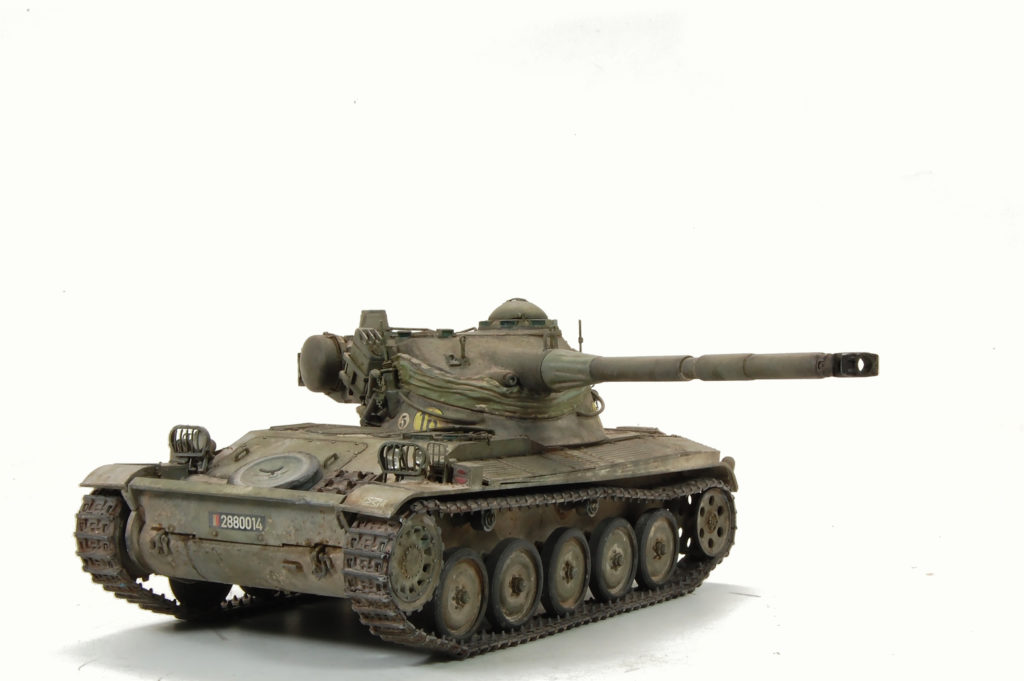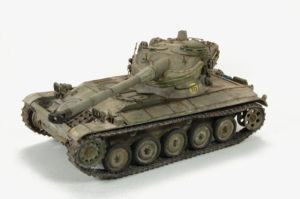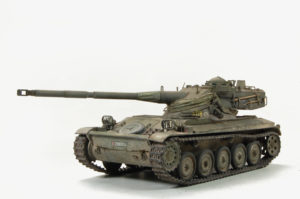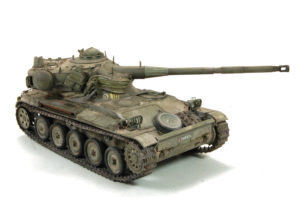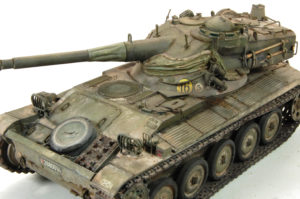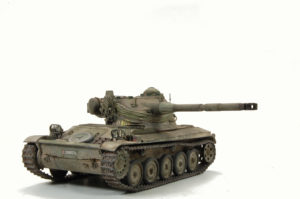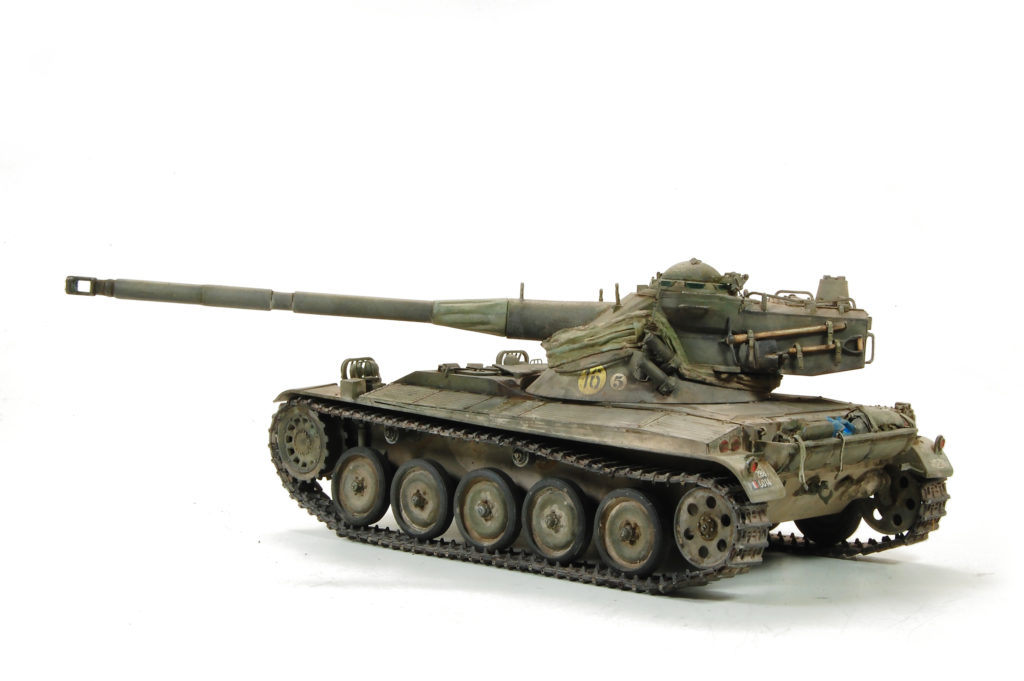French Firepower AMX-13/90
1 It’s usually at about this point in most modeling articles that the author provides a brief description of the vehicle in question. Quite honestly, if I were to give any sort of technical or service description of the AMX-13/90 it would be at best a labored, semi-creative re-write of a Wikipedia description – or worse – simply blatant plagiarism. That is to say, I really do not have any insight or particular knowledge into this vehicle – no more so than any of you could easily find for yourself with a few key-strokes. What I can speak to, however, is to how this AFV’s relative obscurity (at least to me anyway) and quirky turret drew my attention. The simple fact of the matter is that it looks pretty cool!
It’s usually at about this point in most modeling articles that the author provides a brief description of the vehicle in question. Quite honestly, if I were to give any sort of technical or service description of the AMX-13/90 it would be at best a labored, semi-creative re-write of a Wikipedia description – or worse – simply blatant plagiarism. That is to say, I really do not have any insight or particular knowledge into this vehicle – no more so than any of you could easily find for yourself with a few key-strokes. What I can speak to, however, is to how this AFV’s relative obscurity (at least to me anyway) and quirky turret drew my attention. The simple fact of the matter is that it looks pretty cool!
Ok, onto the project. I cracked open the box on this model with only my leanings toward the off-beat subject and a desire to “build something”. While I’ve certainly done my share of a magazine builds, this particular time I was only building for myself. It wasn’t until the model was finished and I had posted a few pictures online that Andy contacted me and asked if I would be willing to submit. Of course, I am happy to oblige. That said since this project wasn’t necessarily intended to be an article what follows are some “real” progress photos while others have been 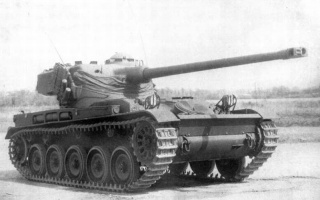 “recreated” in order to help illustrate my ideas and techniques. I only say this so that you will understand that, although the photos may show the results of a cumulative process, the techniques themselves describe what I have used to create the finishes.
“recreated” in order to help illustrate my ideas and techniques. I only say this so that you will understand that, although the photos may show the results of a cumulative process, the techniques themselves describe what I have used to create the finishes.
By now, I’ve built a number of the Takom kits and each has been a pleasure due to their clarity of instructions and good fit of the parts. Perhaps their only drawback might be the awkward placement of some of the sprue connection points on certain parts, but generally, these can be overcome with some careful blade skills and a bit of sanding. This kit was built basically from the box. However, I did take the opportunity to add a few finer details here-n-there; specifically, I added spare parts PE for the tool straps and various grab handles. I also stippled Mr. Surfacer 500 on the front area of the turret to enhance the cast effect.
I began the painting by adding AMMO Dark Olive Drab to areas of shadow. Not so much a pre-shade, but more for insurance that I had all of the hard to get to places completely covered before proceeding with the overall painting. The base colors relied upon AMMO Olive Drab, Drab Shine, and Forest Green colors. My intention for this model was for a finish that I might term “realistic”, that is not reliant upon the artistic approaches that tend to favor extreme highlights or modulation style. As you can see in the photos, the coverage is basically uniform overall, with only slight highlights and shadows and only a hint of the brighter green in places.
The above-mentioned acrylic base colors have been applied and then sealed with AMMO Satin Clear. Certain items such as the tools and dust tarp around the turret have been painted using Vallejo colors due to their excellent coverage when applied by brush. The base colors were further enhanced by the use of artist’s oils. These effects can be noticed in the subtle tonal color shifts in certain areas (note the blue tones on the spare wheel) and preliminary shading along panels and surface details.
My intention for the weathering was to portray a dusty appearance over the dark green base. Honestly, dusty finishes are something that I’ve always struggled with and was one of the reasons that I decided do this model – just to get a bit of practice – let’s see how this goes? I began by laying down a base of “dust” using a mix of AMMO Mud and Light Dust enamel effects applied using my airbrush. This mix was highly diluted with enamel thinner so that the coverage would be virtually translucent, and allow the paints would flow about the surface – almost creating a wind-blown effect. This level of effect was built-up slowly with repeated applications. These same colors were also applied to various areas using a fine tipped brush in order to enhance the accumulations around certain surface features. I used enamel thinner to feather the edges of the applied areas in order to remove any tide-marks and help provide a more natural appearance.
When painting, one of the ideas that I enjoy exploring is finding those areas that can help “tell the story”. In this case, I thought that maybe the heat of the muffler would precipitate the wear and corrosion of the cover plate – thus also giving me the opportunity to add just a bit of color to 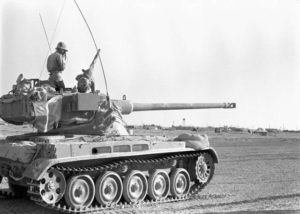 the overall drab finish. I dabbed Lifecolor acrylic paints onto the surface to create the basis for the rusted patches and then applied AMMO enamel rust effects (highly diluted) to help unify and give depth to the stains. Returning to the Mud and Dust enamel colors I work to add specific weathering highlights and details. When weathering, I feel that it’s important that the random nature of “Mother Nature” is captured. Here, I am flicking small speckles of the “dusty” color onto the front plates, and while somewhat controlled, the randomness of their distribution ensures a certain realism in the final finish. However, left to her own devices Mother Nature might be a bit harsh or out of place for our miniature needs. In order to remedy this, certain speckles, or even entire areas are softened using a bush moistened with enamel thinner.
the overall drab finish. I dabbed Lifecolor acrylic paints onto the surface to create the basis for the rusted patches and then applied AMMO enamel rust effects (highly diluted) to help unify and give depth to the stains. Returning to the Mud and Dust enamel colors I work to add specific weathering highlights and details. When weathering, I feel that it’s important that the random nature of “Mother Nature” is captured. Here, I am flicking small speckles of the “dusty” color onto the front plates, and while somewhat controlled, the randomness of their distribution ensures a certain realism in the final finish. However, left to her own devices Mother Nature might be a bit harsh or out of place for our miniature needs. In order to remedy this, certain speckles, or even entire areas are softened using a bush moistened with enamel thinner.
By this point in the process, much of the preliminary shading and surface details have been lost due to the over-spray of the dusty effects. I work my way around the model adding thinned dark brown and green enamel colors in order to re-establish depth and definition along panel lines and around surface details. This same idea holds true by adding a light dust color pin-wash to other areas so as to highlight details. In this case, the dusty color contrast nicely against the green color bringing added attention to the vents.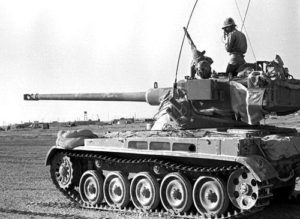 As I move closer to the finale, I turn my attention to adding the small touches. A #2 lead pencil to add a polished, metallic edge near the driver’s station. This same idea of showing exposed, metal surfaces are produced elsewhere as well, using AMMO Gun Metal pigment rubbed onto the surface using my figure to give a darker, metallic sheen to this exposed edge. Other edges are refined using the ole’ fashioned dry-brush technique. I find this method to be particularly effective in portraying “clean” areas from crew activity. It also has the secondary beneficial effect of giving a subtle “outline” to the model.
As I move closer to the finale, I turn my attention to adding the small touches. A #2 lead pencil to add a polished, metallic edge near the driver’s station. This same idea of showing exposed, metal surfaces are produced elsewhere as well, using AMMO Gun Metal pigment rubbed onto the surface using my figure to give a darker, metallic sheen to this exposed edge. Other edges are refined using the ole’ fashioned dry-brush technique. I find this method to be particularly effective in portraying “clean” areas from crew activity. It also has the secondary beneficial effect of giving a subtle “outline” to the model.

